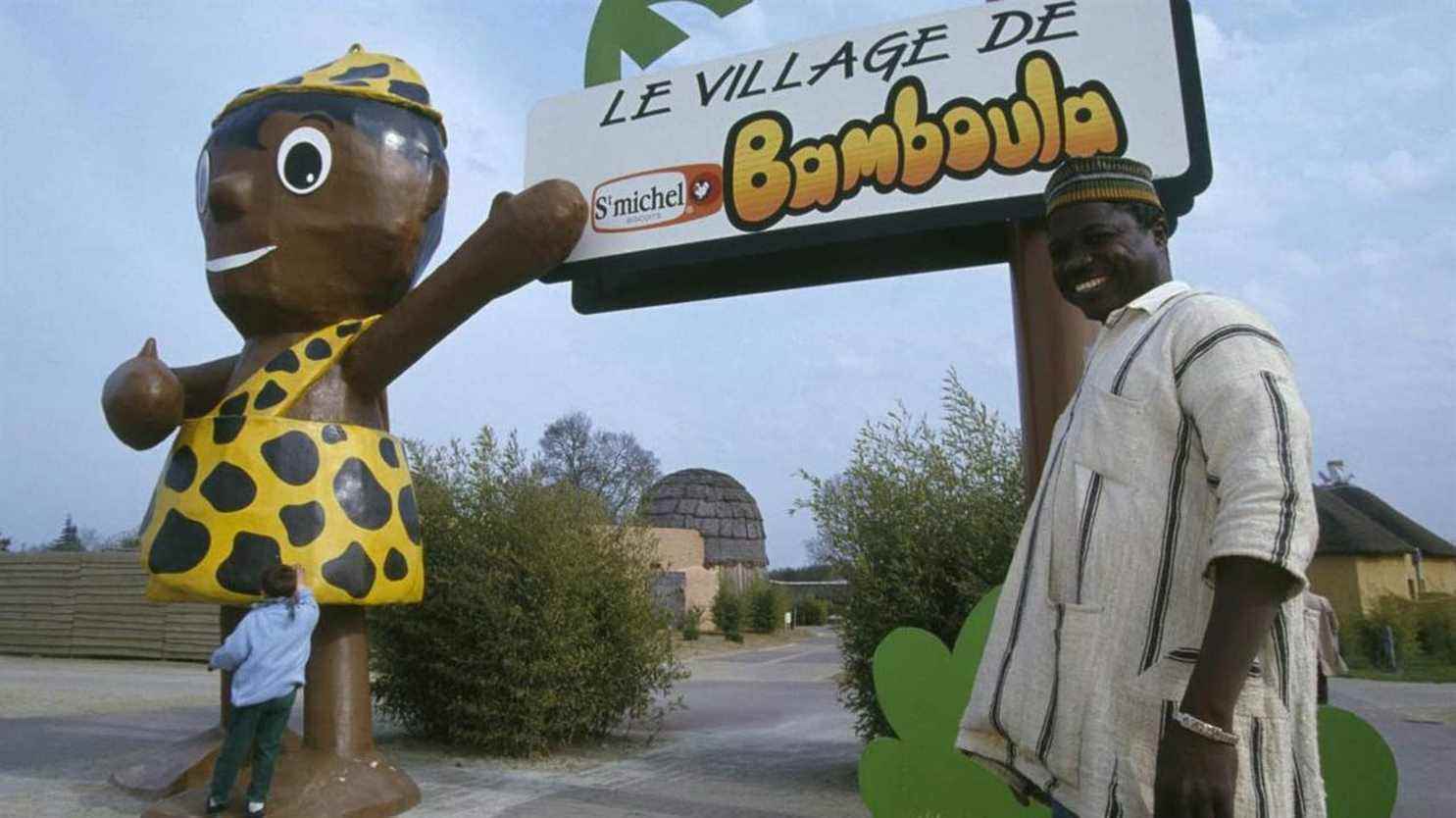“Promote Ivory Coast” and boost tourism in the region. It is in the name of these two initiatives that “The village of Bamboula” was born in March 1994, in the heart of an animal park located 20 km from Nantes.. Supported by the public authorities and the Ivorian government, Dany Laurent, the director of the zoo who is carrying out this project, is recruiting in South Africa.twenty artists and artisans. From men, women and three children in charge of animating this complex sponsored in part by the Saint-Michel biscuit factory. Biscuit factory which has been very successful for several years thanks to a chocolate shortbread represented by a small black character, named “Bamboula”.
The village naturally takes the name of the famous biscuit. But behind the exotic setting, a reality from another time very quickly emerges. The the most basic rights of these Ivorian artists are flouted: passports confiscated, ban on leaving the park, little or no rest days, sleeping on a simple mattress placed on the ground, all for a salary equivalent to a quarter of the minimum wage. Literally exploited, they are exhibited like veritable fairground beasts. “I still have images in my head”, says Eugénie Bamba in the documentary The village of Bamboula, broadcast on Tuesday January 18 on France 2 (11:50 p.m.). “It reminded me of other times. I thought to myself: Where are we?, is indignant the one who was at the time president of the League of Human Rights of Loire-Atlantique.
Impossible not to think about the colonial period and especially to the “human zoos” presented in the universal exhibitions a hundred years earlier. “It’s as if we were animals that they went to take from the bush and put there”, confirms Edith Lago, one of the dancers of the village troupe. “Dany Laurent told us that we just had to dance topless, that there were people who paid to come in, that they could come and watch all the time. When we were asked: ‘How are you? ‘are you not embarrassed?’ (…) We said: ‘Everything is fine’, when we were badly in our skin.
If the public authorities blindly condone, union activists, human rights activists and various associations are protesting against the unworthy treatment inflicted on these men, women and children and are meeting in the collective No to the human reserve. “There are two 12-year-old girls. There is a 10-and-a-half-year-old boy who is part of the troupe and who performs all week. These children are not accompanied by their parents, who have stayed in Côte ivory. They are not educated. It’s a shame”, indignant at the time Philippe Gautier, member of the national union of musician artists and the collective, who testifies in the documentary.
“When I talk about it, I get chills, is sorry Eugenie Bamba, because I found them in an impossible destitution. It was mid-March, the women were in sandals, there were neither warm shoes nor a sweater on their backs. I asked them, ‘How’s it going? Have you seen any doctors?’ They answered me: ‘No, when we have problems, it is the veterinarians who take care of us’.”
Thanks to the force of action of the Non à la Réserve Humain collective, which took the case to court, the village of Bamboula closed its doors definitively on September 14, 1994. The artists and craftsmen were quickly sent back to Côte d’Ivoire. Three years later, on July 1, 1997, the park and its director were sentenced to pay a symbolic franc to associations, for “attacking human dignity”.
The documentary The village of Bamboula directed by Yoann de Montgrand and François Tchernia is broadcast on France 2 on January 18 at 11:50 p.m. and can be viewed in replay on france.tv
